
Deluge of Data Threatens Many Backup Systems
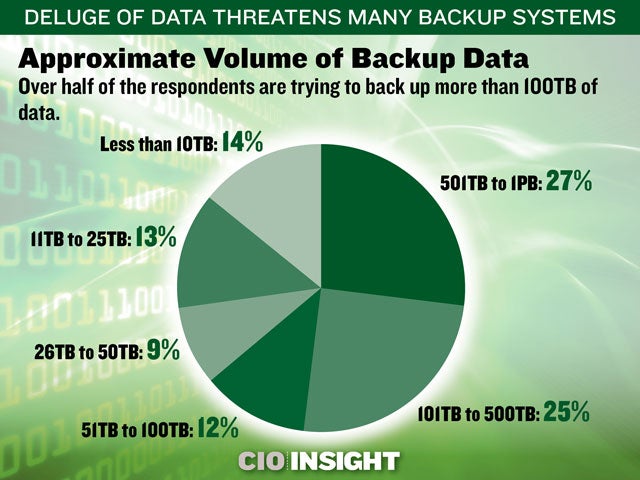 Approximate Volume of Backup Data
Approximate Volume of Backup Data
Over half of the respondents are trying to back up more than 100TB of data. 501TB to 1PB: 27%, 101TB to 500TB: 25%, 51TB to 100TB: 12%, 26TB to 50TB: 9%, 11TB to 25TB: 13%, Less than 10TB: 14%
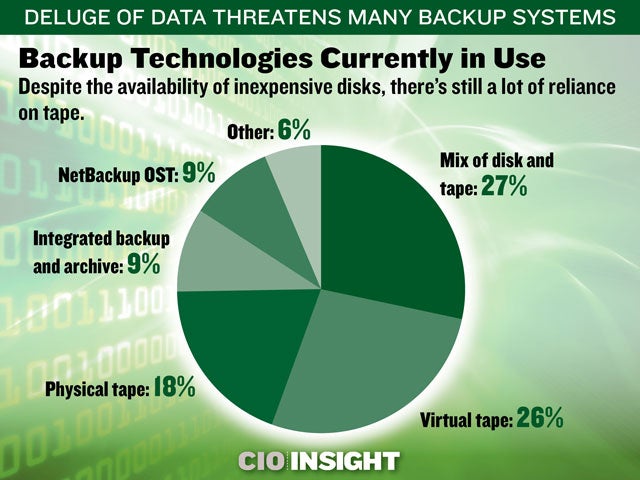 Backup Technologies Currently in Use
Backup Technologies Currently in Use
Despite the availability of inexpensive disks, there’s still a lot of reliance on tape. Mix of disk and tape: 27%, Virtual tape: 26%, Physical tape: 18%, Integrated backup and archive: 9%, NetBackup OST: 9%, Other: 6%
 Most Used Backup Application Vendor
Most Used Backup Application Vendor
Usage of Symantec products spans three different product lines. Symantec: 31%, CommVault: 18%, IBM Tivoli: 14%, Multiple backup applications: 12%, EMC: 9%, Other: 17%
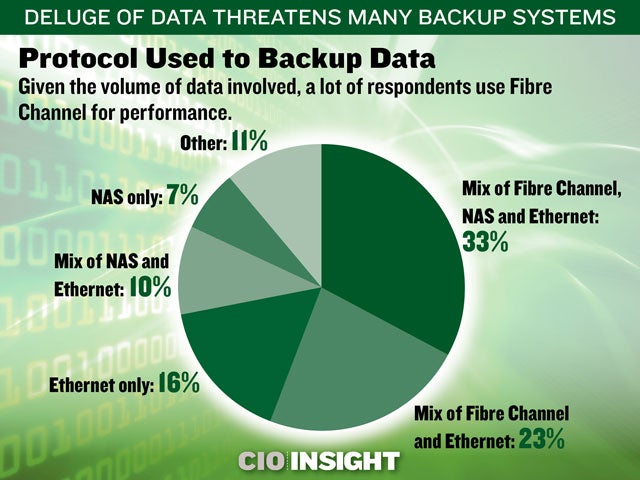 Protocol Used to Backup Data
Protocol Used to Backup Data
Given the volume of data involved, a lot of respondents use Fibre Channel for performance. Mix of Fibre Channel, NAS and Ethernet: 33%, Mix of Fibre Channel and Ethernet: 23%, Ethernet only: 16%, Mix of NAS and Ethernet: 10%, NAS only: 7%, Other: 11%
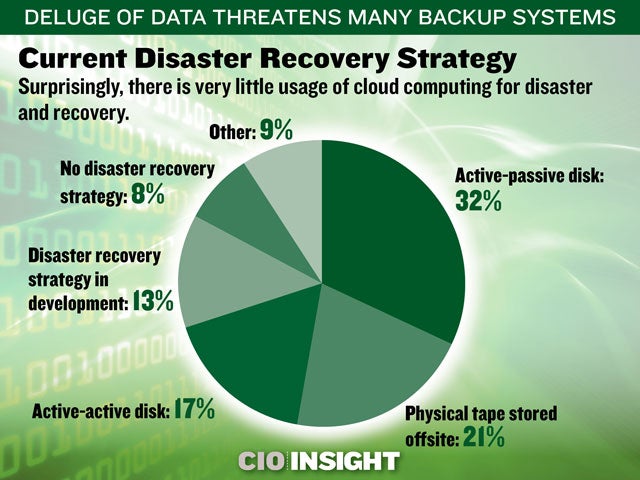 Current Disaster Recovery Strategy
Current Disaster Recovery Strategy
Surprisingly, there is very little usage of cloud computing for disaster and recovery. Active-passive disk: 32%, Physical tape stored offsite: 21%, Active-active disk: 17% , Disaster recovery strategy in development: 13%, No disaster recovery strategy: 8%, Other: 9%
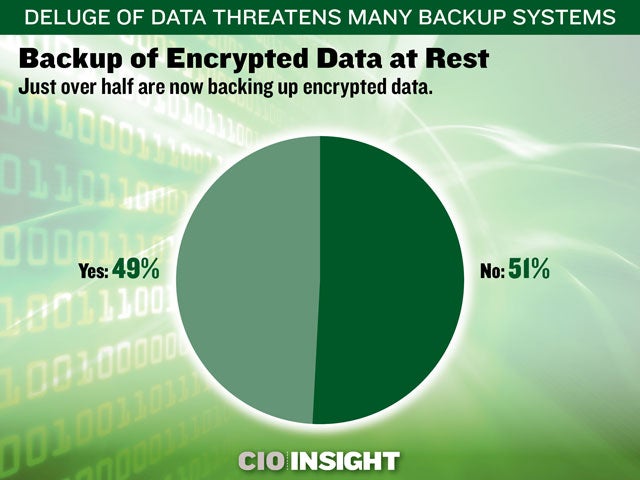 Backup of Encrypted Data at Rest
Backup of Encrypted Data at Rest
Just over half are now backing up encrypted data. No: 51%, Yes: 49%
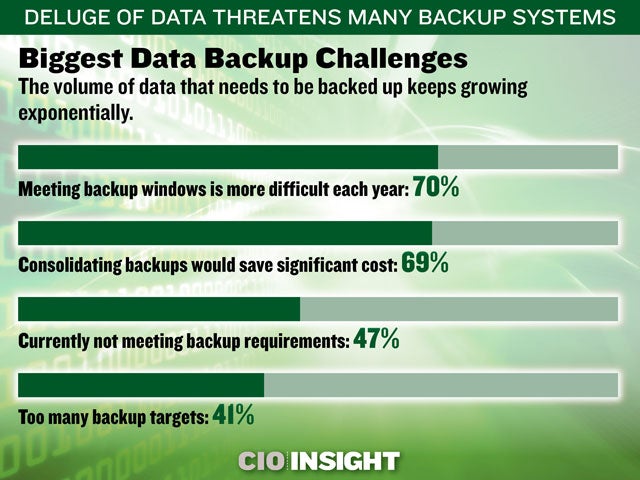 Biggest Data Backup Challenges
Biggest Data Backup Challenges
The volume of data that needs to be backed up keeps growing exponentially. Meeting backup windows is more difficult each year: 70%, Consolidating backups would save significant cost: 69%, Currently not meeting backup requirements: 47%, Too many backup targets: 41%
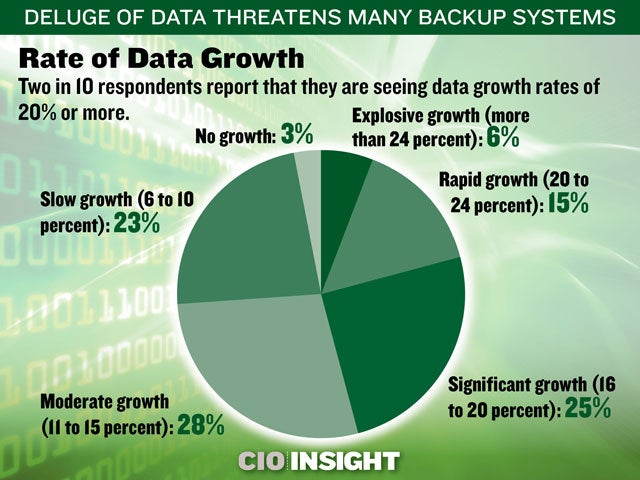 Rate of Data Growth
Rate of Data Growth
Two in 10 respondents report that they are seeing data growth rates of 20% or more. Explosive growth (more than 24 percent): 6%, Rapid growth (20 to 24 percent): 15%, Significant growth (16 to 20 percent): 25%, Moderate growth (11 to 15 percent): 28%, Slow growth (6 to 10 percent): 23%, No growth: 3%
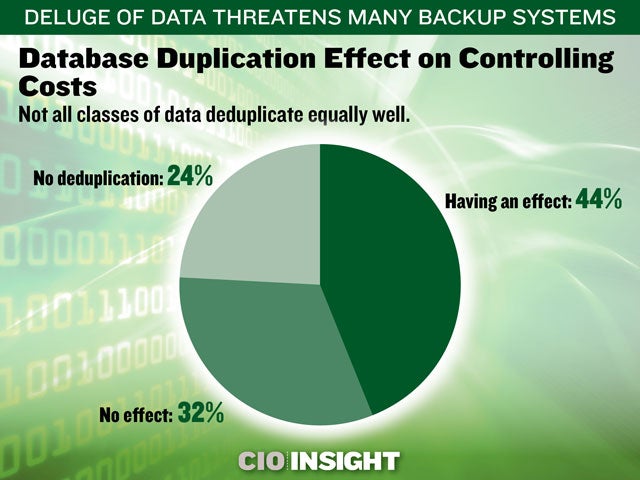 Database Duplication Effect on Controlling Costs
Database Duplication Effect on Controlling Costs
Not all classes of data deduplicate equally well. Having an effect: 44%, No effect: 32%, No deduplication: 24%
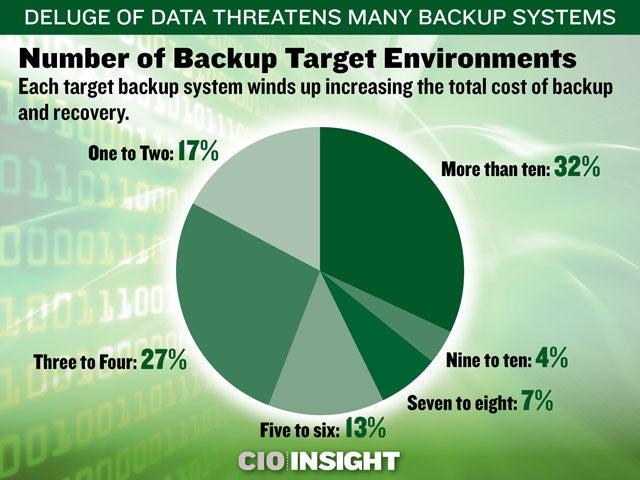 Number of Backup Target Environments
Number of Backup Target Environments
Each target backup system winds up increasing the total cost of backup and recovery. More than ten: 32%, Nine to ten: 4%, Seven to eight: 7%, Five to six: 13%, Three to Four: 27%, One to Two: 17%